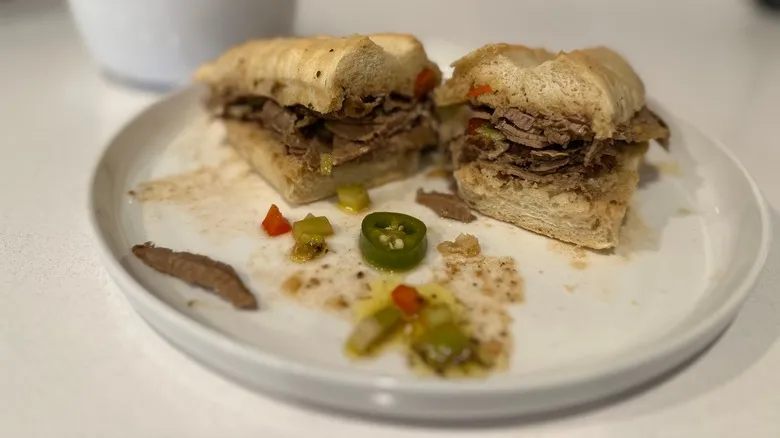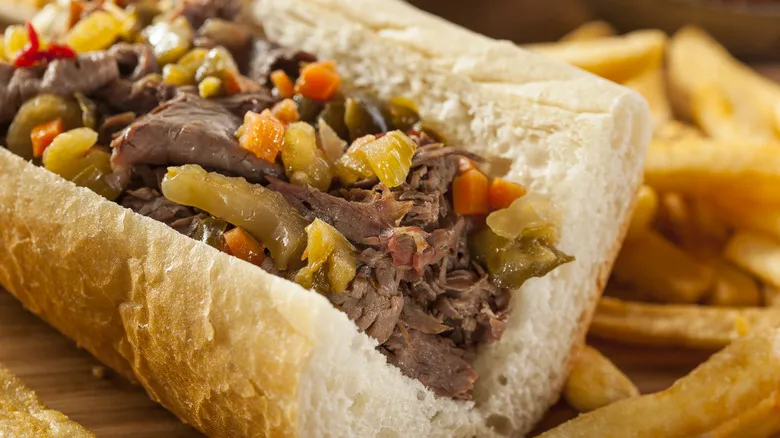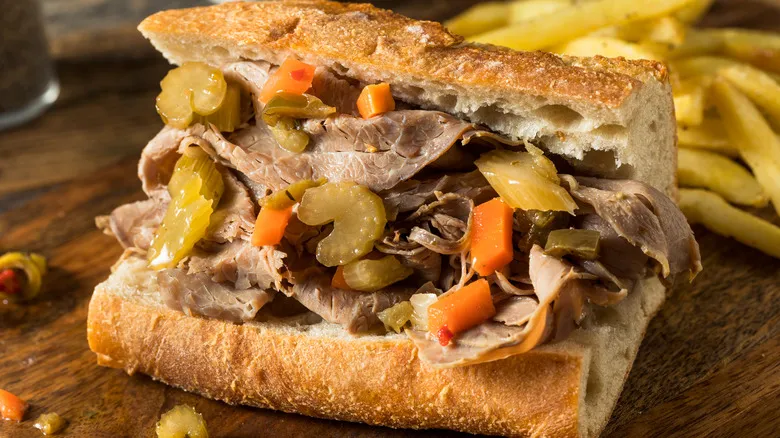The Italian beef may have originated at a wedding

There are several theories about the origins of Italian beef, but Anthony Ferreri is the individual most frequently recognized for its creation. Around the conclusion of World War I, Ferreri was a street vendor in Chicago, selling cold sandwiches. His breakthrough moment came after he attended a "peanut wedding." You might wonder, "What is a peanut wedding?" This is an old tradition that has largely faded from view, but it once represented a significant aspect of the Italian-American experience.
In the early 1900s, Chicago saw a significant influx of Italian immigrants, many of whom were financially struggling. This situation worsened after World War I, as the Great Depression took hold across the country. As a result, many Italian-Americans of that time could not afford lavish weddings, leading to ceremonies being held in family homes with limited food budgets. Peanuts were a common snack, along with beef sandwiches. Given Chicago's historical reputation as a meat-packing center, beef was readily available.
The beef sandwiches served at peanut weddings were not the Italian beefs we recognize today; the meat was cut much thicker. However, Ferreri discovered that by slicing the beef thinner, he could create more sandwiches and serve a larger crowd. This innovation marked the beginning of the modern Italian beef.
Competing theories about the Italian beef's origin

Anthony Ferreri's son, Al, founded Al's Beef in 1938, a business that remains operational to this day. In a conversation with Newcity, Al's nephew and the current owner, Chris Pacelli Jr., disclosed that his uncle initially established the restaurant as a cover for illegal gambling after serving time for ties to organized crime. What began as a mere facade transformed into a thriving enterprise when the sandwiches began to fly off the shelves, particularly appealing to blue-collar workers. Al's Beef also extended its hours, allowing Italian-Americans—predominantly Catholic and traditionally abstaining from meat on Fridays—to satisfy their cravings for beef right after midnight on Saturday.
Today, Pacelli continues to advocate for his family's legacy in the Italian beef narrative, though there are rival claims. Many contend that it was not Anthony Ferreri who created the Italian beef, but rather Pasquale Scala, whose background closely mirrors Ferreri's. Scala also sold street food, catered numerous peanut weddings, and later ran a meatpacking business. He is said to have conceived the idea of thinly-slicing beef as well, eventually becoming a key supplier to Italian beef establishments. While it's impossible to determine which origin story is accurate, the true innovator behind the Italian beef deserves immense gratitude from the city of Chicago and food enthusiasts everywhere.
Recommended

Watergate Salad Has Nothing To Do With The Scandal, So Why Is It Called That?

Sparkling Water Is Older Than The United States Of America

Did The Tartars Invent Tartar Sauce?

What Is Cannoli Filling Actually?
Next up

